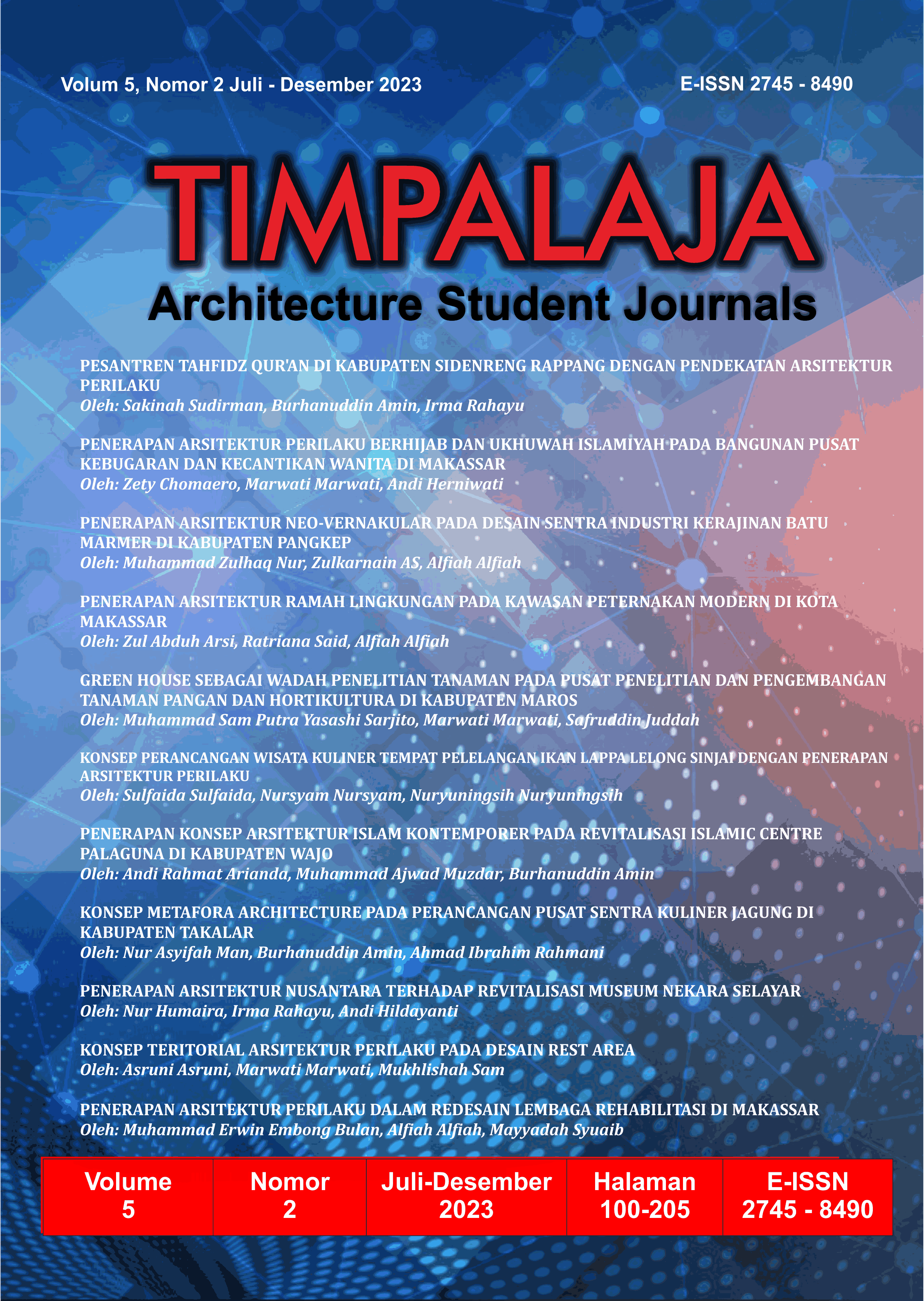Penerapan Arsitektur Perilaku Berhijab Dan Ukhuwah Islamiyah Pada Bangunan Pusat Kebugaran Dan Kecantikan Wanita Di Makassar
Abstract
Abstract_ Behavioral architecture is architecture whose implementation always includes behavioral considerations in design. Humans are the center of the environment and at the same time also become part of the environment. In general, the application of behavioral architecture contains elements that must be taken into account, including social activities that are accommodated in the building, the flexibility required for each activity, activities that influence or are influenced, and Background and goals of space users. Descriptive study identifying hijab behavior and Islamic brotherhood in the case of a design study for women's fitness and beauty centers. The identification results found behavioral groupings in the form of private space zones for beauty care activities, fitness activities and semi-private activities in shared space zones such as commercial and information areas. Neutral colors are used in the room to make visitors safe and comfortable.
References
Haryadi, B. S. (1995). Arsitektur Lingkungan dan Perilaku. Proyek Pengembangan Pusat Studi Lingkungan. Direktorat Jenderal Pendidikan Tinggi Departemen Pendidikan Dan Kebudayaan, Republik Indonesia.
LIE, S. (2014). Kajian Penggunaan ruang Publik dengan pendekatan Arsitektur Perilaku (Studi Kasus: PKL di Jalan Sutomo Medan dan Sekitarnya). Pemetaan Perilaku, 79–100. https://docplayer.info/68035349-Kajian-penggunaan-ruang-publik-dengan-pendekatan-arsitektur-perilaku.html
Permatasari, R. C., & Nugroho, Y. (2019). Kajian Desain Interior Ruang Tunggu Cip Lounge Bandara Di Indonesia. Aksen, 4(1), 18–37. https://doi.org/10.37715/aksen.v4i1.103 2
Rasikha, T. N. G. (2009). Arsitektur Organik Kontemporer. Universitas Indonesia.
Wright, Frank Lloyd; The Future of Architecture, New York, Horizon Press, 1963
Tandali, A. N., & Egam, P. P. (2011). Arsitektur berwawasan perilaku (behaviorisme). Media Matrasain, 8(1).
Copyright (c) 2023 Zety Chomaero, Marwati Marwati, Andi Herniwati

This work is licensed under a Creative Commons Attribution-ShareAlike 4.0 International License.
By submitting your manuscript to our journal, you are following Copyright and License







